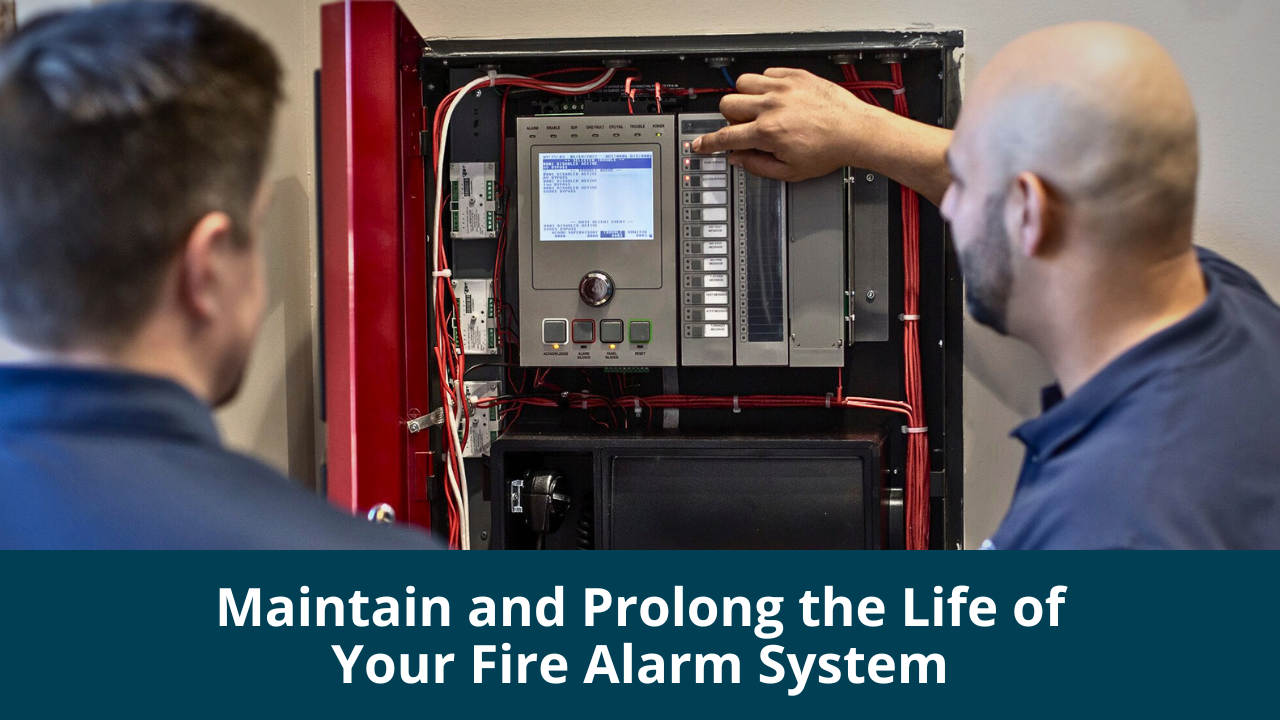
Esscoe is your trusted partner for fire alarm systems!
Wondering how to keep your fire alarm system in top shape and performance? Follow our tips and advice below to get the most out of your equipment.
PROTECT SYSTEM FROM MOISTURE
Moisture can be one of the biggest enemies for fire alarm systems; ensure that your system is ready to fight against any and all moisture. Review your panel locations, to ensure that they are in conditioned and dry environments. Any equipment installed in wet locations shall be marked for “use in wet locations.” All equipment that is subjected to damage shall be protected by a listed means.
LIGHTNING OR SURGE SUPPRESSION
Be aware of how the equipment, conductors, boxes, exterior weather-tight boxes and devices are installed. Look for faulty or incorrect installations that may impair the system further down the line. Some systems have exterior speakers, horns and strobes. Be sure to regularly examine them for build-up of debris from birds nests, rodents or other damaged building elements that may break their watertight seals which can make you susceptible to moisture damage, but also create short circuit pathways which are susceptible to lighting and transient voltage damage. The latest release of NEC/NFPA 70 edition 2020 (NEC 2020) has placed a greater emphasis on increasing personnel safety by mandating the use of Surge Protective Devices (SPDs). In addition to increased personnel safety benefits, surge suppression devices installed on conductors which leave the building envelope, or incoming 120 VAC power to control panels and power supplies can provide an added degree of protection of these components, many of which are now deemed Critical Operations Power Systems (COPS) in many jurisdictions. We suggest consulting Article 708 of the 2020 NEC, specifically Article 708.2 on how to identify if your system is a COPS, which in many cases a fire alarm system or emergency communication system is.
REGULAR CLEANING
Regular cleaning of smoke detectors can help prevent nuisance alarms or false alarms and disruption of your operations and increase the confidence in the ability of your system to identify and protect occupants and your physical facilities from damage from fire.
TESTING
Regular and comprehensive testing of the entire fire alarm system is crucial to ensure its properly functioning. This includes the control panel, detectors, initiating devices, communication and power backup systems. These tests should be performed by trained personnel in accordance with the manufacturer’s guidelines, NFPA 72, and the National Fire Alarm and Signaling Code. Testing should include a full-functional test, checking for fault indications on the control panel.
MAINTENANCE RECORD
Maintain a thorough and up-to-date record of all inspections, tests, and maintenance activities performed on the fire alarm system. This should include the date, details of the performed action, and any anomalies or issues found and resolved. This ensures that the fire alarm system’s maintenance history is traceable and that it complies with local codes and insurance requirements. It also helps identify recurring problems that may suggest underlying issues.
PROPER TRAINING
Ensure that key personnel understand the basic operation of the fire alarm system, what to do when an alarm is activated, and who to contact for service or repair. Personnel should be educated about what each type of alarm signifies and the necessary steps they need to take during an emergency. This includes training on how to reset the system, silence alarms, and initiate manual alarms if necessary.
MONITORING SERVICE
If the fire alarm system is monitored by a third-party service, confirm that the service is fully operational and that communication between the system and the monitoring service is working correctly. Regularly review your contract with the monitoring service to ensure that it meets your current needs.
SYSTEM UPDATES AND UPGRADES
Technology continually evolves and improves. Keep your fire alarm system up to date with the latest software updates and consider hardware upgrades as recommended by the manufacturer or your fire protection engineer. Newer models might offer more accurate detection, faster response times, or enhanced features.
BATTERY CHECKS
Many fire alarm systems have backup batteries to ensure they continue to operate during power outages. Regularly check these batteries for any signs of damage or corrosion, replace them as per the manufacturer’s guidelines, and perform regular load tests to ensure they will function in case of an emergency.
PHYSICAL INSPECTION
Periodic physical inspection of all devices, including detectors, pull stations, annunciators, and alarm notification appliances, should be carried out to check for physical damage, dirt, paint, or any other obstruction that could affect the operation of the system. This should also involve inspecting the wiring for signs of damage or wear and tear.